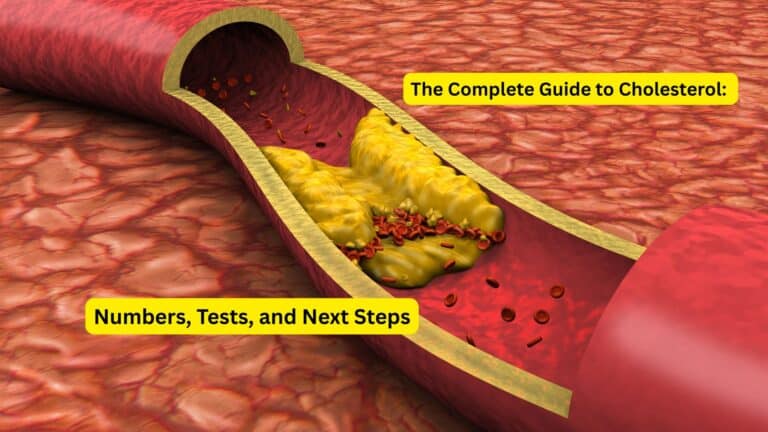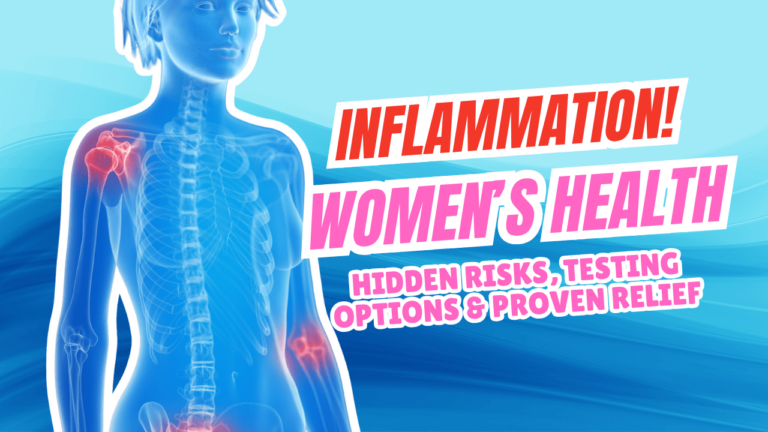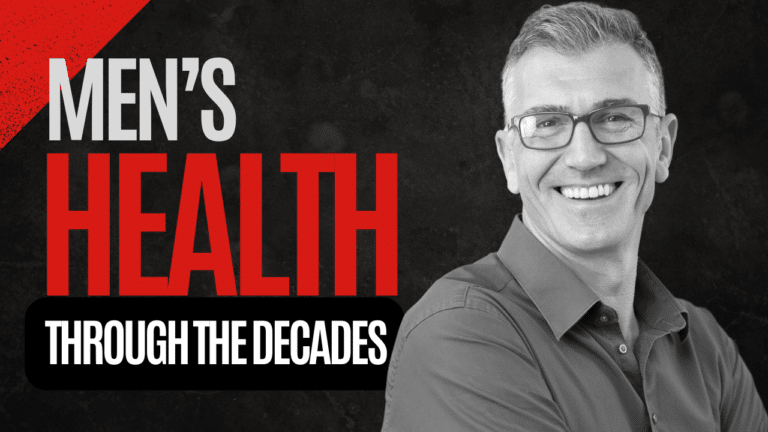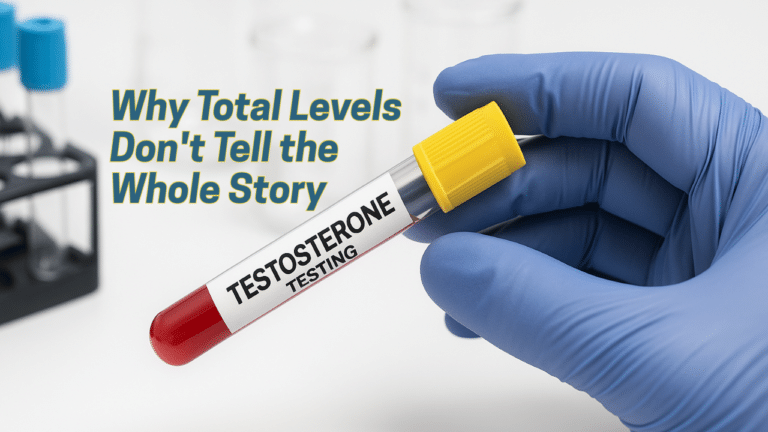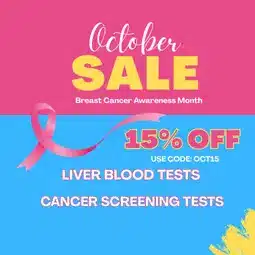Cancer remains one of the leading causes of death worldwide, affecting millions of people and their families each year. While a cancer diagnosis can feel overwhelming and unpredictable, understanding the factors that influence cancer risk can empower individuals to take meaningful preventive action. Cancer risk factors fall into two distinct categories: those you can modify through lifestyle choices and environmental changes, and those that are fixed aspects of your biology and genetics. This comprehensive guide will help you distinguish between controllable and uncontrollable cancer risk factors, understand how they interact, and discover practical steps you can take to reduce your overall cancer risk through informed decision-making and proactive health management.
Modifiable Cancer Risk Factors
Modifiable cancer risk factors represent powerful opportunities for prevention, as these elements can be changed, reduced, or eliminated through conscious lifestyle choices and environmental modifications. Research consistently demonstrates that these controllable factors play a substantial role in cancer development, with studies indicating that 40-50% of all cancers are linked to modifiable risks.
Lifestyle Choices
The most significant modifiable cancer risk factors stem from daily lifestyle decisions that accumulate over time to influence cancer development. These choices represent areas where individuals have direct control over their cancer risk profile.
Tobacco Use and Smoking
Tobacco use stands as the single most preventable cause of cancer worldwide. Smoking is responsible for approximately 22% of global cancer deaths, affecting not only lung cancer risk but also increasing the likelihood of developing cancers of the throat, bladder, pancreas, kidney, and cervix. The carcinogenic compounds in tobacco smoke damage DNA in cells throughout the body, creating mutations that can lead to malignant transformation.
Secondhand smoke exposure also significantly increases cancer risk, particularly for lung cancer in non-smokers. The good news is that quitting smoking at any age provides immediate and long-term health benefits, with cancer risk decreasing substantially within years of cessation.
Alcohol Consumption
Regular alcohol consumption increases the risk of several types of cancer, including liver, breast, colorectal, head and neck, and esophageal cancers. Alcohol is metabolized into acetaldehyde, a toxic compound that can damage DNA and proteins in cells. Even moderate drinking carries some increased risk, though the risk escalates significantly with heavy consumption.
Diet and Nutrition
Dietary patterns profoundly influence cancer risk through multiple mechanisms. Diets high in processed meats, saturated fats, and refined sugars while low in fruits, vegetables, and fiber are associated with increased cancer risk. Conversely, Mediterranean-style diets rich in plant foods, healthy fats, and lean proteins appear protective against various cancers.
Physical Activity and Obesity
Excess body weight contributes to nearly 20% of cancer diagnoses in the United States, including breast, colorectal, pancreatic, and endometrial cancers. Obesity creates chronic inflammation, alters hormone levels, and affects immune function in ways that promote cancer development.
Regular physical activity provides protective effects through multiple pathways, including maintaining healthy weight, boosting immune function, and reducing chronic inflammation. Even moderate exercise significantly reduces cancer risk across multiple cancer types.
Infections and Vaccinations
Certain infections are responsible for approximately 15-20% of cancers worldwide, making prevention of these infections a crucial modifiable risk factor. The development of effective vaccines has transformed cancer prevention in this category.
Human Papillomavirus (HPV)
HPV infection is linked to nearly all cases of cervical cancer and many cases of head, neck, anal, and genital cancers. The HPV vaccine, recommended for both males and females starting around age 11-12, has dramatically reduced HPV infection rates and associated cancers in vaccinated populations.
Hepatitis B and C
Chronic hepatitis B and C infections significantly increase liver cancer risk. Hepatitis B vaccination is highly effective at preventing infection, while hepatitis C can now be cured with direct-acting antiviral medications. Early detection and treatment of these infections can prevent progression to liver cancer.
Helicobacter pylori
This bacterial infection of the stomach increases the risk of gastric cancer and gastric lymphoma. H. pylori can be detected through testing and effectively treated with antibiotics, eliminating this cancer risk factor.
Environmental and Occupational Exposures
Environmental carcinogens present modifiable risks that can often be reduced through awareness, protective measures, and policy changes.
Ultraviolet (UV) Radiation
UV radiation from sun exposure and tanning beds is the primary cause of skin cancer, including melanoma, basal cell carcinoma, and squamous cell carcinoma. UV damage is cumulative over a lifetime, making sun protection particularly important during childhood and adolescence.
Protective measures include using broad-spectrum sunscreen with SPF 30 or higher, wearing protective clothing and wide-brimmed hats, seeking shade during peak UV hours (10 AM to 4 PM), and avoiding tanning beds entirely.
Occupational Carcinogens
Various workplace exposures increase cancer risk, including asbestos (mesothelioma and lung cancer), benzene (leukemia), formaldehyde (nasopharyngeal cancer), and diesel exhaust (lung cancer). Workers in high-risk industries should follow safety protocols, use protective equipment, and participate in occupational health monitoring programs.
Air Pollution and Environmental Toxins
Outdoor air pollution, particularly fine particulate matter, increases lung cancer risk. While individuals cannot completely control air quality, they can reduce exposure by avoiding high-traffic areas during peak pollution times, using air purifiers indoors, and supporting policies that improve air quality.
Non-Modifiable Cancer Risk Factors
Non-modifiable cancer risk factors are inherent characteristics that cannot be changed but are crucial for understanding personal cancer risk and developing appropriate screening and prevention strategies. While these factors cannot be altered, knowing about them helps inform medical decision-making and screening recommendations.
Age
Age represents the most significant non-modifiable risk factor for cancer, with risk increasing substantially after age 50. The majority of cancers are diagnosed in people over 65, reflecting the cumulative effects of cellular damage over time and the declining efficiency of DNA repair mechanisms with aging.
This age-related risk increase occurs because cells accumulate genetic mutations throughout life, and the body’s ability to identify and eliminate potentially cancerous cells diminishes with age. Additionally, longer lifespans provide more opportunities for exposure to carcinogens and more time for slow-growing cancers to develop.
While aging cannot be prevented, understanding age-related risk helps explain why cancer screening recommendations typically begin in middle age and become more frequent as people get older.
Genetics and Family History
Inherited genetic mutations account for approximately 5-10% of all cancers, but their impact on individual risk can be profound. Several well-characterized genetic syndromes significantly increase cancer risk across multiple cancer types.
BRCA1 and BRCA2 Mutations
The prevalence of inherited BRCA1 and BRCA2 mutations in the general population is about 1 in 400, but is higher in certain ethnic groups, particularly Ashkenazi Jews. These mutations dramatically increase the risk of breast and ovarian cancers, with lifetime risks reaching 70% for breast cancer and 40% for ovarian cancer in mutation carriers.
Lynch Syndrome
This inherited condition increases the risk of colorectal cancer and several other cancers, including endometrial, gastric, and ovarian cancers. People with Lynch syndrome may develop colorectal cancer at much younger ages than typical, often before age 50.
Other Hereditary Cancer Syndromes
Additional genetic conditions include Li-Fraumeni syndrome (multiple cancer types), familial adenomatous polyposis (colorectal cancer), and hereditary diffuse gastric cancer syndrome, each carrying specific cancer risks and management requirements.
Sex and Ethnicity
Biological sex influences cancer risk for sex-specific cancers (breast, ovarian, prostate, testicular) and shows differences in risk for other cancer types. For example, men have higher rates of liver, kidney, and bladder cancers, while women have higher rates of thyroid cancer and gallbladder cancer.
Ethnicity also affects cancer risk patterns, with different populations showing varying susceptibilities to specific cancer types. These differences result from complex interactions between genetics, environmental exposures, cultural practices, and access to healthcare.
The Interplay Between Modifiable and Non-Modifiable Risks
The relationship between controllable and uncontrollable cancer risk factors is complex and dynamic, with growing evidence that lifestyle modifications can significantly impact cancer risk even in people with high inherited risk. This understanding has revolutionized cancer prevention approaches, emphasizing that genetics is not destiny.
Lifestyle Impact on Genetic Risk
Recent research demonstrates that individuals with inherited cancer risk mutations can still substantially reduce their cancer risk through lifestyle modifications. For example, women with BRCA mutations who maintain healthy body weight, exercise regularly, and limit alcohol consumption have lower cancer risks than those who do not, even though their baseline risk remains elevated.
Similarly, people with Lynch syndrome can reduce their colorectal cancer risk through regular exercise, maintaining healthy weight, and possibly through aspirin use, as recommended by their healthcare providers.
Personalized Risk Assessment
Modern cancer prevention increasingly relies on personalized risk models that integrate multiple factors, including family history, genetic testing results, lifestyle factors, and environmental exposures. These comprehensive assessments help healthcare providers and patients develop tailored prevention and screening strategies.
Advances in genetic testing have made it more accessible and affordable to identify inherited cancer risks, allowing for earlier and more targeted interventions. However, genetic testing should always be accompanied by genetic counseling to help individuals understand their results and make informed decisions about prevention and screening.
Gene-Environment Interactions
Emerging research reveals complex interactions between genetic predisposition and environmental factors, where certain genetic variants may increase sensitivity to specific environmental exposures. For example, some genetic variants affect how efficiently the body processes alcohol, potentially modifying alcohol-related cancer risk.
These discoveries are leading to more sophisticated prevention recommendations based on individual genetic profiles, though this field is still evolving and not yet ready for widespread clinical application.
Prevention and Practical Actions
Understanding cancer risk factors becomes most valuable when translated into concrete preventive actions. Effective cancer prevention combines lifestyle modifications, appropriate screening, and risk-based medical interventions tailored to individual risk profiles.
Implementing Healthy Lifestyle Changes
Tobacco Cessation
Quitting smoking provides immediate and long-term benefits, with cancer risk beginning to decline within months of cessation. Numerous resources are available to support smoking cessation, including medications, counseling, and support groups. Healthcare providers can prescribe cessation aids and provide guidance on effective quitting strategies.
Alcohol Moderation
Limiting alcohol consumption to moderate levels (one drink per day for women, two for men) or avoiding it entirely reduces cancer risk. For individuals at high risk due to genetic factors or personal history, complete abstinence may be recommended.
Nutritional Optimization
Adopting a diet rich in fruits, vegetables, whole grains, and lean proteins while limiting processed foods, red meat, and added sugars supports cancer prevention. The Mediterranean diet pattern has shown particular promise for cancer risk reduction across multiple studies.
Physical Activity Integration
Regular physical activity of at least 150 minutes of moderate-intensity exercise per week provides significant cancer protection. Activities can include brisk walking, swimming, cycling, or any form of movement that increases heart rate and can be sustained over time.
Weight Management
Maintaining a healthy body mass index (BMI) between 18.5 and 24.9 reduces cancer risk across multiple cancer types. For those who are overweight, even modest weight loss provides health benefits and cancer risk reduction.
Screening and Early Detection
Cancer screening represents one of the most effective cancer prevention strategies, allowing for detection of precancerous conditions or early-stage cancers when treatment is most successful.
Age-Appropriate Screening
Standard screening recommendations include mammograms for breast cancer (starting at age 40-50), colonoscopies for colorectal cancer (starting at age 45-50), Pap smears for cervical cancer (starting at age 21), and potentially lung cancer screening for high-risk individuals with significant smoking histories.
Risk-Based Screening
Individuals with elevated risk due to family history or genetic mutations may need earlier, more frequent, or additional screening tests. For example, women with BRCA mutations may begin breast MRI screening in their 20s or 30s, decades before standard mammography recommendations.
Genetic Counseling and Testing
Genetic counseling helps individuals understand their inherited cancer risks and make informed decisions about genetic testing, prevention strategies, and screening schedules. Genetic testing is typically recommended for people with strong family histories of cancer or specific patterns suggestive of hereditary cancer syndromes.
Walk-In Lab offers convenient access to genetic testing panels that can identify inherited mutations associated with increased cancer risk, including BRCA1/2 testing and more comprehensive hereditary cancer panels. These tests can be ordered without a doctor’s visit, though genetic counseling is recommended for result interpretation and management planning.
Laboratory Testing for Cancer Risk Assessment
Several laboratory tests can provide valuable information about cancer risk and overall health status:
Inflammatory Markers
Chronic inflammation is linked to increased cancer risk. Tests measuring C-reactive protein (CRP) and other inflammatory markers can identify elevated inflammation levels, allowing for targeted interventions to reduce inflammation through diet, exercise, and stress management.
Vitamin D Levels
Low vitamin D levels are associated with increased risk of several cancers, including colorectal, breast, and prostate cancers. Testing vitamin D levels allows for appropriate supplementation to maintain optimal levels for cancer prevention.
Hormonal Assessments
Hormone levels, particularly estrogen and testosterone, influence cancer risk for hormone-sensitive cancers. Testing can identify imbalances that may increase cancer risk and guide interventions to optimize hormonal health.
Frequently Asked Questions
What are the main modifiable cancer risk factors?
The primary modifiable cancer risk factors include tobacco use (smoking and secondhand smoke exposure), excessive alcohol consumption, poor diet high in processed foods and low in fruits and vegetables, physical inactivity, obesity, UV radiation exposure, and certain infections like HPV and hepatitis B. These factors are responsible for approximately 40-50% of all cancer cases, making lifestyle modifications a powerful tool for cancer prevention.
Which cancer risk factors can’t be changed?
Non-modifiable cancer risk factors include age (with risk increasing significantly after age 50), inherited genetic mutations (such as BRCA1/2 and Lynch syndrome), family history of cancer, biological sex, and ethnicity. While these factors cannot be altered, understanding them helps healthcare providers develop appropriate screening recommendations and prevention strategies tailored to individual risk levels.
Does lifestyle matter if I have a genetic predisposition to cancer?
Yes, lifestyle modifications remain crucial even for individuals with inherited cancer risk mutations. Research shows that people with genetic predispositions can still significantly reduce their overall cancer risk through healthy lifestyle choices, including maintaining normal weight, exercising regularly, avoiding tobacco, limiting alcohol, and following appropriate screening schedules. Genetics influences baseline risk, but lifestyle factors can substantially modify that risk.
Can vaccines prevent cancer?
Several vaccines effectively prevent cancer by preventing infections that can lead to cancer development. The HPV vaccine prevents cervical, anal, and other cancers caused by human papillomavirus, while the hepatitis B vaccine prevents liver cancer associated with chronic hepatitis B infection. These vaccines represent some of the most effective cancer prevention tools available and are recommended for appropriate age groups.
How can I determine my personal cancer risk?
Personal cancer risk assessment involves evaluating both modifiable and non-modifiable factors through consultation with healthcare providers, review of family medical history, and potentially genetic testing for inherited cancer syndromes. Walk-In Lab offers convenient access to genetic testing panels and other laboratory tests that can inform cancer risk assessment, though genetic counseling is recommended for comprehensive risk evaluation and management planning.
Conclusion
Understanding the distinction between modifiable and non-modifiable cancer risk factors empowers individuals to take meaningful action in cancer prevention while maintaining realistic expectations about what can be controlled. While factors like age, genetics, and family history cannot be changed, they provide crucial information for developing personalized prevention and screening strategies. Meanwhile, lifestyle factors such as tobacco use, alcohol consumption, diet, physical activity, and environmental exposures offer significant opportunities for risk reduction.
The most encouraging aspect of cancer risk research is the substantial impact that lifestyle modifications can have, even for individuals with inherited cancer predispositions. This means that regardless of genetic background or family history, everyone can take steps to reduce their cancer risk through informed choices about diet, exercise, tobacco use, alcohol consumption, and environmental exposures.
Effective cancer prevention requires a comprehensive approach that combines healthy lifestyle choices, appropriate screening based on individual risk factors, and potentially genetic testing for those with concerning family histories. The integration of these strategies, tailored to personal risk profiles, offers the best opportunity for cancer prevention and early detection.
Take control of your cancer prevention strategy today by assessing your risk factors and taking appropriate action. Walk-In Lab provides convenient, confidential access to genetic testing panels, inflammatory markers, vitamin D testing, and other laboratory services that support comprehensive cancer risk assessment. Order your preventive health panel today and take the first step toward proactive cancer prevention.
Medical Disclaimer: This content is for informational purposes only and is not intended as a substitute for professional medical advice, diagnosis, or treatment. Always seek the advice of your physician or other qualified health provider with any questions you may have regarding cancer risk assessment, genetic testing, or prevention strategies.
